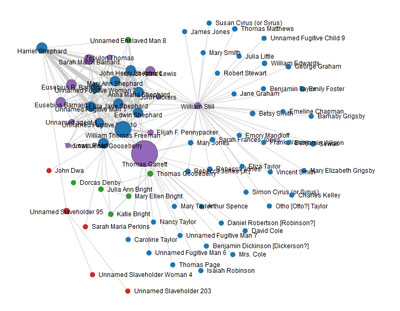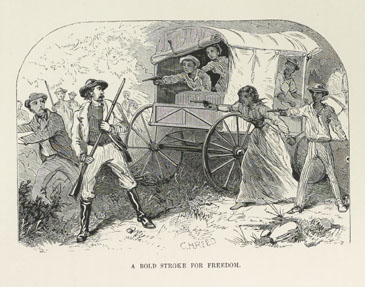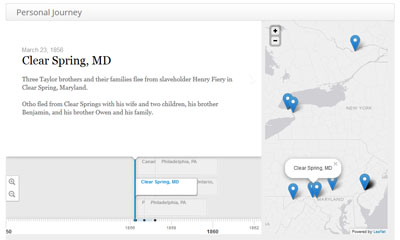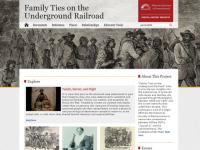After many months of hard work, we have now completed the prototype web site for the William Still Digital History Project!
This new resource, titled "Family Ties on the Undergound Railroad," weaves together the manuscript journal and published book of William Still, who was the chairman of Philadelphia's Vigilance Committee in the mid-nineteenth century.
Check out what we've been working on:
still.hsp.org/still (log-in information below)
username: hspguest
password: preview
(Because it's just a prototype and not yet a full interactive exhibit, we plan to keep the site behind a password for now.)
As we've described in past blog posts, we chose to focus this initial prototype on the experiences of three enslaved families who passed through Philadelphia in their journeys to freedom: the Shephards, the Taylors, and the Wanzers. This focus allowed us to create a manageable "proof of concept" site, while also exploring all of the complexities that we'll face when we expand the project to Still's entire volumes.
The prototype site includes transcripts and digital facsimiles from Still's works, carefully researched biographies, and other contextual annotation and materials. Thanks to our text encoding work, we also created some cool new tools to present the social networks connecting the people described in Still's works and to present geographic maps showing people's movement over time.
And even at this prototype stage, the project provides extraordinary insight into the experiences of enslaved individuals and families who passed through Philadelphia and the covert networks that aided their escape.
Thanks to Still's documentation, for instance, we know that Harriet Shephard fled enslavement in Columbia, Maryland on October 26, 1855, along with her five children, her aunt and uncle, and three young men. Their journey to freedom included a stop in Kimberton, Pennsylvania, where Harriet and her children were separated from the rest of the group to ensure their safety. Read more about Harriet Shephard (user name and password listed above).
Here's a screen grab of the social network map for the Harriet Shephard group (she's in the top left), showing all the individuals in the prototype connected to her group:

Still also documented the story of Frank Wanzer, who fled enslavement on December 24, 1855 with his fiancée, Emily Foster, his fiancée's sister and her husband, and two unidentified men. After a gunfight in Maryland (see illustration below) where the two unnamed men were captured or killed, the smaller group traveled onward, arriving in Canada in late January, 1856. Frank returned to the U.S. in July 1856 to rescue his sister and brother-in-law, and their friend. Read more about Frank Wanzer (user name and password listed above).

The Wanzer group as depicted in Still's book, The Underground Rail Road
The Taylor family is no less extraordinary. Otho (or Otto) Taylor initially fled enslavement in Clear Spring, Maryland on March 23, 1856, with his wife and children, his brother Owen and his family, and his brother Benjamin. The group had arrived safely in Canada by late May 1856, but Otho returned to the United States in March 1857 to rescue a second group of two enslaved men and one woman. Read more about Otho Taylor (user name and password listed above).
Here's a screen grab showing Otho Taylor's personal journey, as described by Still (just one part of Otho's biography page in the prototype site):

With Still’s resources interpreted and linked for the first time, even in this small "proof of concept" prototype, scholars, educators, students, genealogists, and history enthusiasts will be able to make deep connections both geographically and chronologically as they are guided through his meticulous documentation.
So with the prototype complete, what happens next?
In recent weeks, we've collected feedback on the prototype in both formal and informal settings, and we look forward to integrating this feedback into the next phase of the project. HSP is currently seeking funding to expand the project into a fully implemented site about the Underground Railroad in Philadelphia and beyond.
In the meantime, please stay tuned to this blog for updates on HSP's other innovative digital history projects, including the Historic Images, New Technologies initiative.

Any views, findings, conclusions, or recommendations expressed in this project do not necessarily reflect those of the National Endowment for the Humanities.

